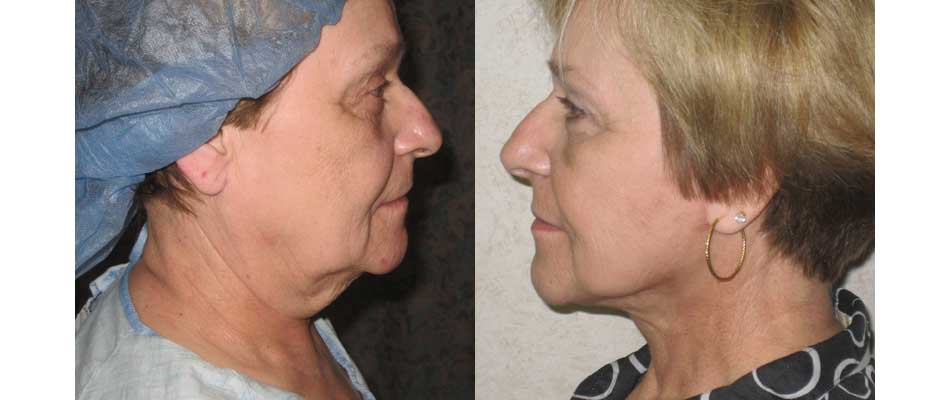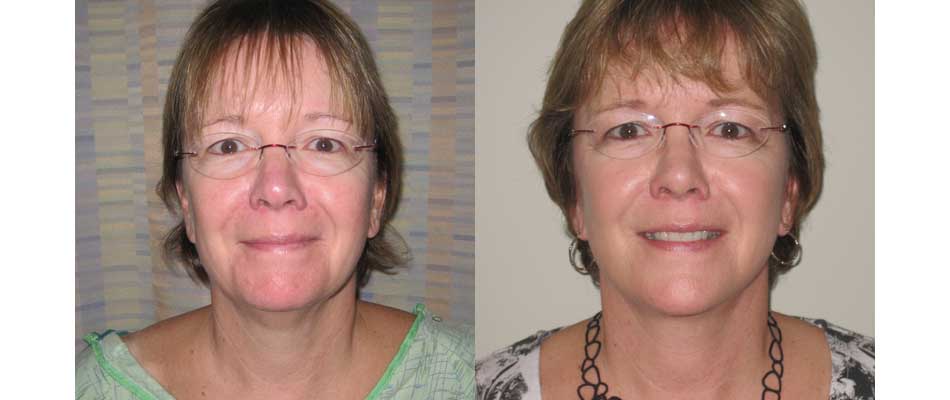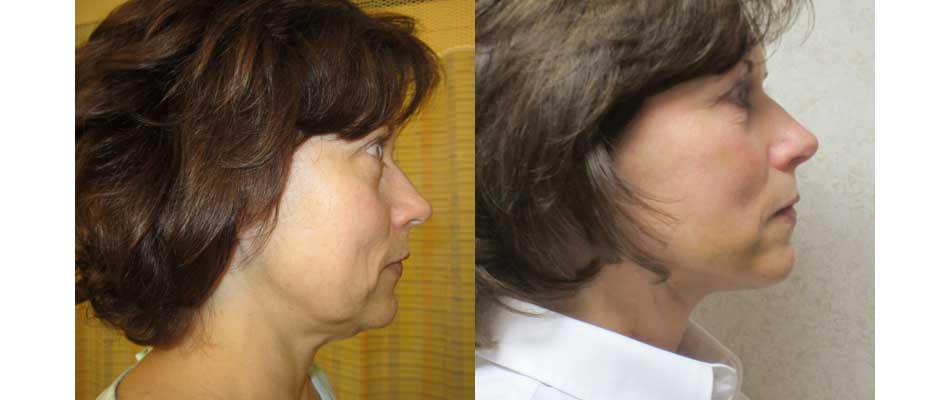Facelift
What Is a Facelift?
A facelift, also called a rhytidectomy, is a type of cosmetic surgery that sculpts the face to reduce the signs of aging, creating a more youthful contour. It involves removing excess skin and reshaping the underlying tissues to reduce the effects of gravity and age.
Facelift surgery can address:
- Crease lines between the corner of your mouth and your nose
- Jowls
- Lack of or sagging facial fat
- Loose skin and fat that create a double chin
- Sagging skin
Facelift surgery can be combined with other types of cosmetic procedures to address specific concerns, like:
- Acne, sun damage, uneven pigmentation (chemical peel)
- Ear surgery (otoplasty)
- Eye lift (blepharoplasty)
- Fine lines, lost volume (dermal fillers)
Types of Facelifts
There are several types of facelifts, each targeting a different area. The general process is similar – using small, strategically placed incisions, the skin is carefully separated from the tissues beneath. Then the muscles and other tissues are tightened to sculpt a more youthful face. Excess fat and skin are removed.
The procedure typically includes a mid-facelift (the cheek area from the corners of your eyes to the corners of your mouth) and a lower facelift (everything below the corners of your mouth).
At your consultation, your plastic surgeon will discuss the results you’re hoping for and your options for achieving them.
Good Candidates for a Facelift
Cosmetic surgery is a highly personal choice with equally personal goals and results. Your procedure will be based on your wishes, history, and the structures of your face. At your initial consultation, you’ll discuss your medical history, medications, and expectations with your surgeon.
Your surgeon will take pictures of your face from different angles and distances and assess your bone structure, fat content and distribution, and skin quality, all of which may influence your options.
A good candidate is someone who:
- Doesn’t have any health conditions that impair blood clotting or wound healing
- Has realistic expectations about results
- Has some natural skin elasticity
- Is a non-smoker (smoking impairs healing)
- Is at a healthy, stable weight
- Is committed to caring for their face and skin afterward
- Is in overall good physical, psychological, and emotional health
The Procedure
Before surgery, you may need to stop smoking and stop taking medications that can cause or worsen bleeding. You will need to bring another adult with you to drive you home after surgery. You should also plan to have someone stay with you for the first two days after.
- You may have general anesthesia or IV sedation.
- Your surgeon will make careful incisions at the hairline, around your ears, and/or under the chin, depending on how extensive your surgery will be.
- Facial fat and underlying tissue may be repositioned or sculpted, and muscles may be lifted.
- Skin is repositioned, and excess is trimmed.
- Your surgeon will close with sutures or surgical glue.
- You will rest under medical supervision in a recovery area until you are cleared to go home. Your face may be bandaged to minimize swelling, and you may have small drainage tubes in place.
- Before leaving, your surgeon will talk to you about post-operative instructions and care and schedule your follow-up appointments.
When you go home, it is critical that you follow your surgeon’s post-operative instructions carefully for your safety and to achieve your best results.
Recovery
You’ll start to feel better a few days after surgery, but you may need to take one to three weeks off work. You may need to avoid strenuous activities for about a month. The swelling may last as long as three weeks, but it may take several months to feel like yourself again.
How Much Does a Facelift Cost?
While cost is an important consideration when deciding on any cosmetic surgery – it’s essential to choose a surgeon you feel comfortable with. Your surgeon’s skill and your confidence in him will help you feel more at ease throughout the process.
Most insurance plans won’t cover cosmetic surgery. Like most cosmetic procedures, the cost of a facelift may vary from person to person and depends on your:
- Chosen procedure(s)
- Geographic location
- Surgeon’s experience
The cost usually includes all the related fees, including:
- Anesthesia
- Implants
- Medical tests and X-rays
- Post-surgery compression garments
- Prescriptions
- The surgeon’s fee
Risks
Like any surgical procedure, there are some risks associated with having a facelift. Complications are rare but may include:
- Anesthesia reactions
- Blood clots
- Hair loss
- Hematoma
- Infection
- Long-term swelling
- Nerve injury
- Numbness or other changes in skin sensation
- Poor wound healing
- Scarring
- Skin loss
If you want to turn back those unwanted effects of time and restore your face to a natural-looking, more youthful state, schedule a free facelift consultation today!























